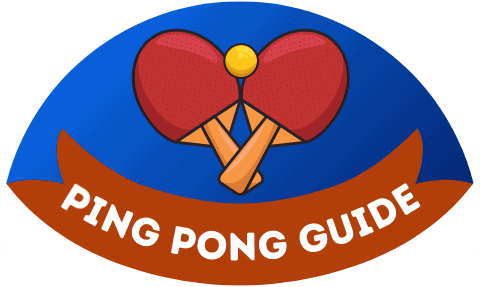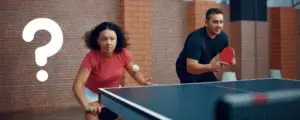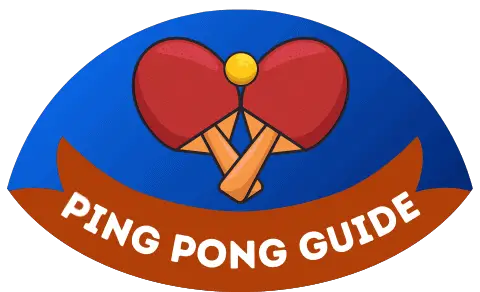It has probably happened to everyone: you don’t hit the ball with the racket as planned, but it bounces on a finger or your thumb. Fortunately, the ball still gets to the other side of the table and you continue to play normally.
But – Is this actually in accordance with the rules? What happens if I drop my racket? And am I allowed to play the ball with my free hand? If you are asking yourself these questions, you’ve come to the right place. In this post, you will find all the answers.
There is actually only one sentence in the rules (A 2.5.7). It states the following:
“A player strikes the ball if he or she touches it in play with his or her racket, held in the hand, or with his or her racket hand below the wrist.”
So it is only in accordance with the rules to play the ball with the hand in which you hold the paddle. Everything else is considered a fault.
It is still not clear for you? Below you will find more detailed explanations and how this rule is interpreted in individual game situations.
Here is a short overview:
Is it allowed to play the ball with fingers or the back of the hand?

Yes, if the ball unintentionally touches the thumb, a finger or the back of the hand, it is not a mistake and counts as a normal shot.
However, this only applies to the racket hand, i.e. the hand in which you are currently holding the racket.
If it happens unintentionally, the ball may touch the racket first and then a finger or the other way around. This kind of double touch is allowed since 2010.
Is it allowed to hit the ball with the free hand?
First a short explanation: “The free hand is the hand not carrying the racket.” (Rule 2.5.6) – For right-handers, the left hand is the free hand, for left-handers it is the right hand.
So, is it allowed to play ball with the free hand for example because you can’t move the racket hand to the ball? No! – as explained in the rules, touching the ball is only allowed for the racket hand and not for the free hand.
Is it possible to change the racket hand?
Yes, it is allowed to change the racket hand. If you take the paddle in the other hand during the game, you may of course now touch the ball with this hand as well.
The hand that has been holding the bat then becomes the free hand and may not touch the ball.
The racket falls to the ground – Is it allowed to use the hand now?
No! If you drop the racket during the game, it is not allowed to simply play the ball with your hand. This also applies to the hand that has been holding the racket.
In the case of not holding the paddle in either hand, both hands are considered free hands. Accordingly, contact with the ball is not allowed.
However, dropping the bat is not a mistake in itself. If you are quick enough to pick up the racket before your next stroke, you can continue playing normally.





